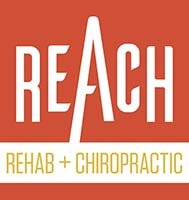COMMON CAUSES OF BACK PAIN
Mechanical back pain is most commonly caused by poor body mechanics and postural habits.
Humans are meant to move and move often — not sit in chairs and stare at electronic screens for hours on end. From infancy through the first year of life, we learn to how to move, setting us up for the rest of our lives.
Mechanical back pain can occur suddenly from something as simple as bending over to put on your socks, or can gradually occur for no apparent reason.
Pain from bending over is not because forward bending is inherently bad, rather it’s the result of the accumulated stress of repetitive bending — the straw that broke the camel’s back, so to say.
Think about the average desk worker’s day: sit for breakfast, sit in the car to work, sit at the desk, sit for lunch, back to sitting at the desk, sit in the car back home, sit in front of the T.V. — you get the point.
The accumulative postural stress of sitting as a daily habit is like bending your finger backward. It may not hurt at first, but the longer you hold it there, and the more pressure you apply over time, it will start to feel uncomfortable and aching. When you let go of the finger, you’ll have a residual ache, but you’ll notice the pain quickly subsides. This is mechanical pain, and is similar to what the typical American with back pain experiences.
So, what happens after you lift something heavy with poor form after sitting all day? It’s like cranking that finger back as far as it can go…and it’s probably going to hurt long after you let go of it!
COMMON TREATMENTS FOR BACK PAIN
The most common treatments are rest, medication, physical therapy, chiropractic, acupuncture, massage, and other various conservative therapies.
While most acute bouts of back pain will resolve on their own within a few weeks, the risk of recurrence is very high. The greatest risk of injury is a previous injury.
Few individuals need surgery for back pain. Have a disc bulge? Even if it’s relevant, lumbar disc herniations have been shown to resolve on their own without surgery.
If you have intense and unrelenting radiating pain down the leg with progressive muscle weakness, bladder or bowel symptoms, or specific structural problems not responding to conservative therapy, surgery may be warranted.


